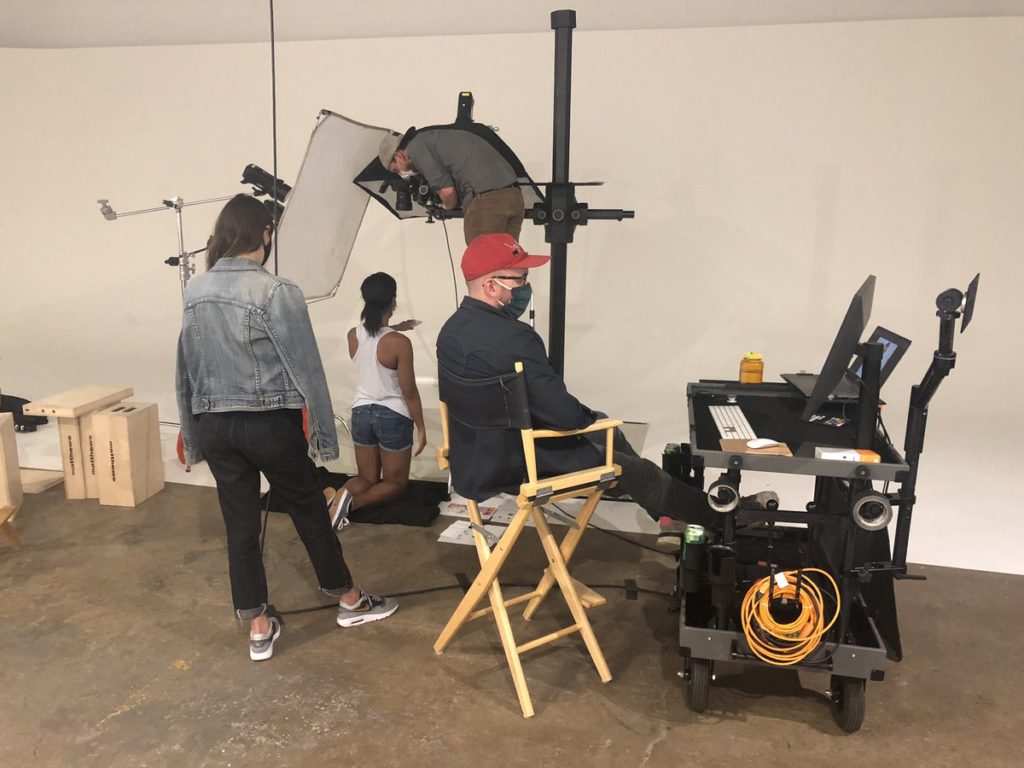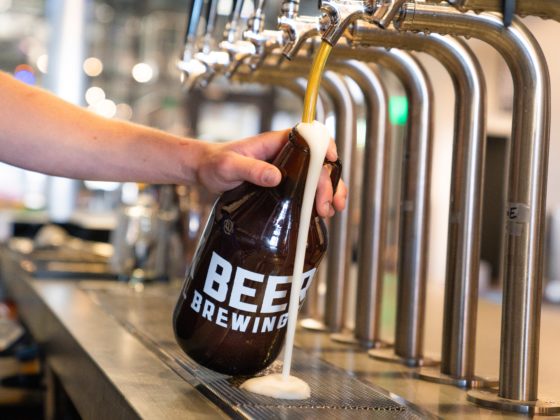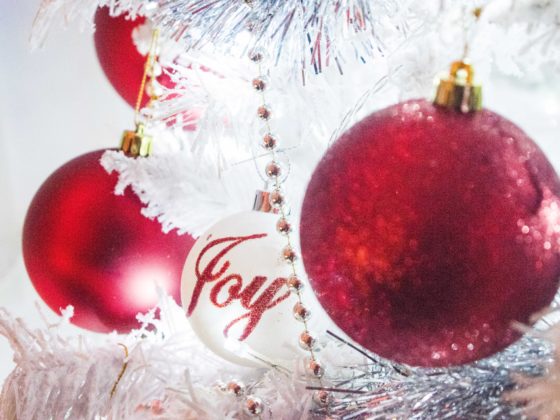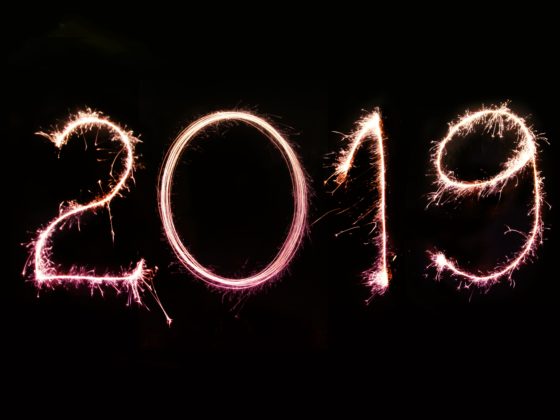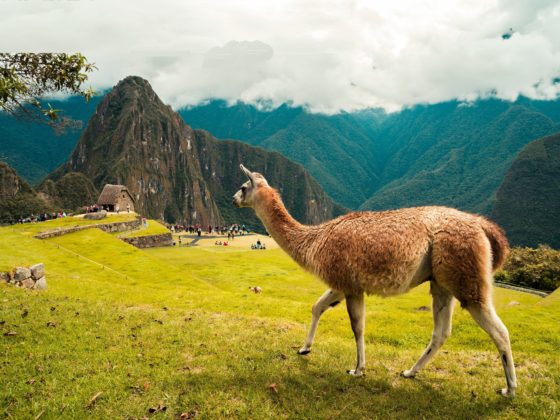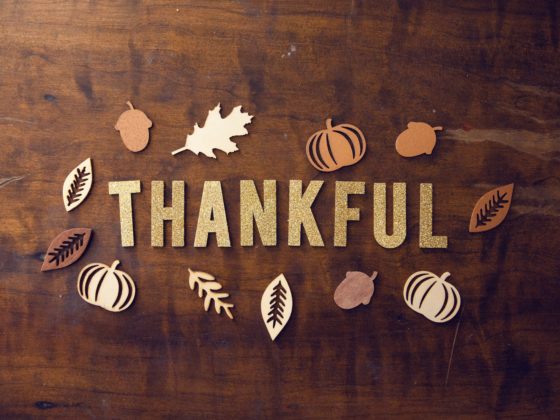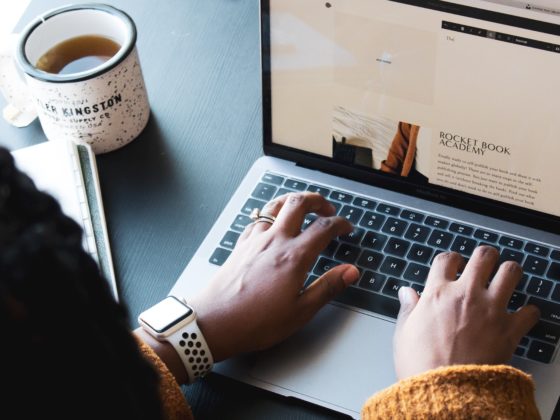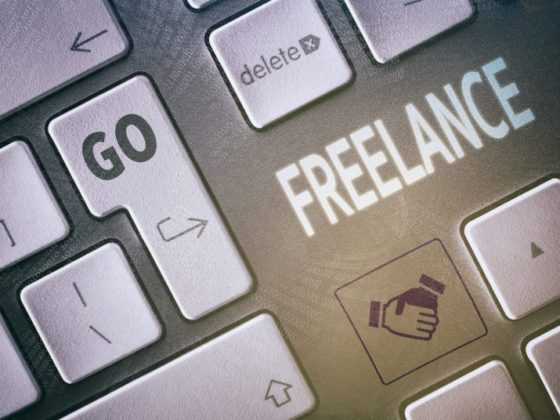Video people are some of the most resourceful on the planet. They can make a tripod out of a water bottle, block daylight with blankets and gaff tape, and simulate a rolling dolly shot with a shopping cart. Plus, they already carry a sherpa-load of gear, so adding a few sanitizing wipes and face masks to their essential gear list is no big deal.
While we haven’t faced a challenge quite like a global pandemic before, every single crew knows what it’s like to make adjustments on the fly. We are no strangers to curveballs. The show, as they say, must go on.
Production practices our Crew Connection video crews are adopting in the COVID-19 landscape
Limiting people on set
Much of production has to happen in person, but reducing the number is doable. For example, Yuki Uemura has producers ask questions remotely either by phone or teleprompter. The latter is especially helpful because it gives the talent a person to look at.
Despite major advancements in the quality of footage, we’ve spent years fighting the battle to convince people that they can’t simply point their iPhone at something and get the quality they want. Still, a client’s self-filmed interview filmed on a phone can protect a lot of people. If a client goes this route, provide them with basic tips (film horizontally in a well-lit location, stabilize the camera on a surface at eye level, etc.) to ensure you get something you won’t mind putting your name on. Similarly, for b-roll, you can produce/direct remotely.
There’s a level of production that DIYers aren’t going to create with their cameras at home, but even primetime shows are scaling back production. Viewers understand and you can still deliver videos you feel proud of. Think of it as the acoustic version of your favorite song.
A cost/return analysis changes when the cost could be someone’s health.
Safety on set
For those who have to be on set, we can still cover the basics such as wearing face masks and gloves (except while being filmed), having plenty of hand sanitizer, taking scheduled hand-washing/equipment-sanitizing breaks, social distancing whenever possible, having individual catering boxes, etc. Most states, including Georgia, have compiled a list of best practices. Whenever possible, shooting outdoors while social distancing is an excellent option.
Equipment
It’s hard to beat a lav mic’s quality, but right now, switching to a boom is preferable. If you must use a lav mic, be sure to sanitize it well between use.
Much of the equipment that makes virtual production and/or social distancing easier on-set is in short supply at the moment. For example, we heard from Allen Rosen that a Black Magic piece “that will allow me to do Zoom, YouTube, or Facebook live from one of our field cameras” has been back-ordered for a month. He also reported that small, remotely-controlled webcams are hard to get right now. Apparently, gear that enhances distance filming is the toilet paper of our industry.
Post-production
The fancy editing suites are nice, but damn, you can do a lot on a laptop. The fact that post-production lends itself well to working from home is one of the biggest blessings of our industry during the COVID-19 era. If “The Last Dance” can shift from their fancy-pants editing facilities to at-home production, you probably can, too.
We’ll likely be turning to post-production even more than usual to simulate crowd shots or otherwise solve problems creatively.
Larger productions
This article talks about two larger-scale productions that moved forward with extra measures in places. “Katla” crew members wore color-coded armbands that dictated where they were allowed to be on set.
While instant testing would be even more helpful, the “Katla” team found daily temperature checks effective. The article noted, “Two crew members who went to the set with elevated temperatures wound up testing positive for Covid-19. They were both sent home to self-isolate for two weeks, and no one else became infected.”
What about the cost?
The extras—from gloves and masks to individual catering and of course, new equipment—are going to mean some additional costs, but if the alternative is to halt everything or to wait indefinitely, those costs are justifiable.
The crew (plus their families and a dog) of a Stephen King adaptation (also described in the above article) self-isolated in a remote farm town for the entire production. According to the producer, “The extra precautions added at least 20% to the initial $10 million budget,” but also made “this whole thing possible.”
The cost to the environment is painful, too. Just as sustainability on set was starting to get some traction, productions have shifted to single-use makeup, individual boxed lunches, disposable masks/gloves, and more. Sorry, Mother Earth.
Bottom Line
There is no roadmap for this, but we will get through it. And like everything these days, we’ll find some silver linings along the way. The best practices from the CDC as well as those specifically for video production provide more of a compass. Use that compass as your guide and adjust. Whether it’s figuring out how to balance homeschooling while working from home or making a DIY dolly, we know how to adapt. We’re creatives: It’s what we do!
Find a crew following COVID-19-era best practices here. Crew Connection is standing by to help.
Pictured: Movie Mogul Productions on a PopSockets brand shoot.
